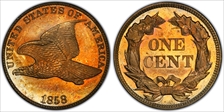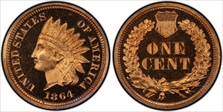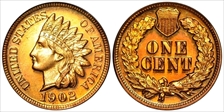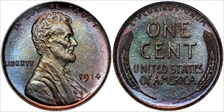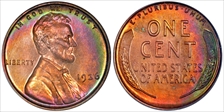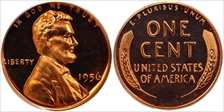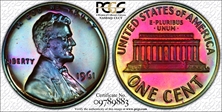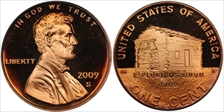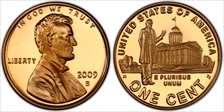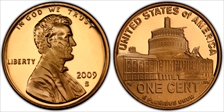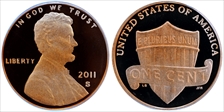Chapman 的钱币相册
An original proof with an approximate mintage of 100, whose total figure is derived from the record of 80 silver proof sets delivered, plus around 20 pattern sets in which these were included. It is estimated that only around 50 of these exist today. This particular issue is known for a needle sharp strike and excellent mirrors, unmistakeable as a proof coin. Examining it next to a very well struck mint-state coin, it is easy to see why. Every detail of the design takes on a very three-dimensional appearance, particularly striking on the wreath of the reverse, and the eye of the eagle. This coin is a whole-heartedly original example in gem cameo, currently number three in the Coinfacts census among two other coins.
EERC (PS), Like the pattern proof strikes of 1858, this example boasts an abundance of die striation impressions, suggesting a very early strike. If "original is best", then this coin is a prize. Toning ranges from absent to golden and orange, leaving reflective mirrors pleasantly intact. Frost in pronounced on the portrait, yet muted elsewhere. Microscopic flyspecks serve to authenticate this coin's pristine nature. Thanks Rick!
EERC (PS), Ex. Friend - Phenomenal "WOW!" coin, and a member of the BWRC Hall of Fame. Mirrors are like liquid pools, and the frost is pronounced across all devices. Notable also for its complete lack of any haze which so often plagues proofs of this era. This is the obverse die stage B according to Rick Snow, with the die crack extending from the rim at 8:00 to the field between NI. Close (like 100x) inspection reveals many die polish marks across the left obverse field, but not a single hairline. The reverse appears perfect. This is truly a great coin, and may very well be the single prettiest proof Indian Cent, from which the derived joy of ownership only grows with time.
Type 2. The difference between Type 1 and 2 is easily seen, knowing what to look for. The obverse was redesigned slightly by Charles Barber in 1886, changing the appearance such that the last feathertip of the head dress is seen pointing toward CA in AMERICA, as opposed to toward the IC, seen in the original Longacre design. The reason for the change is unknown, and it was apparantly so slight that it went unnoticed until 1954. This particular coin has toned such that the copper has taken on the outward appearance of gold at first glance, usually garnering a "Wow!" from most observers.
Top coin is 1914 PR66+BN, second is 1936 Satin PR66RB, and last is 1956 PR67DCAM. There are actually four distinct types of proof cent from the "Wheatback" years. First, there is the one-year type 1909 VDB proof that was discontinued after only 420 pieces were struck. Later that year, a second type emerged without the designer's initials on the reverse. These were struck as Matte Proofs, a method abandoned in 1916, later replaced by the Satin, and then Brilliant proof manufacturing method in 1936. The 1936 Satin Proof, a one-year type, is characterized by satiny-textured fields that were met with distaste from the public prompting their replacement with more brilliant proofs. The 1956 PR67DCAM shown here is an example of more modern methods, often yielding striking contrast between frosted devices and deeply mirrored fields.
Top coin is 1914 PR66+BN, second is 1936 Satin PR66RB, and last is 1956 PR67DCAM. There are actually four distinct types of proof cent from the "Wheatback" years. First, there is the one-year type 1909 VDB proof that was discontinued after only 420 pieces were struck. Later that year, a second type emerged without the designer's initials on the reverse. These were struck as Matte Proofs, a method abandoned in 1916, later replaced by the Satin, and then Brilliant proof manufacturing method in 1936. The 1936 Satin Proof, a one-year type, is characterized by satiny-textured fields that were met with distaste from the public prompting their replacement with more brilliant proofs. The 1956 PR67DCAM shown here is an example of more modern methods, often yielding striking contrast between frosted devices and deeply mirrored fields.
Top coin is 1914 PR66+BN, second is 1936 Satin PR66RB, and last is 1956 PR67DCAM. There are actually four distinct types of proof cent from the "Wheatback" years. First, there is the one-year type 1909 VDB proof that was discontinued after only 420 pieces were struck. Later that year, a second type emerged without the designer's initials on the reverse. These were struck as Matte Proofs, a method abandoned in 1916, later replaced by the Satin, and then Brilliant proof manufacturing method in 1936. The 1936 Satin Proof, a one-year type, is characterized by satiny-textured fields that were met with distaste from the public prompting their replacement with more brilliant proofs. The 1956 PR67DCAM shown here is an example of more modern methods, often yielding striking contrast between frosted devices and deeply mirrored fields.
Top coin is 1961 PR66BN, PCGS Memorial Cent Coinfacts Plate Coin. Bottom is 2005 PR70 DCAM. There are two main differences between these coins. First, the composition of the cent was changed to copper plated zinc in 1982. Second, there were several successive design changes to the obverse portrait that took place during the early 1990s, changes in the hair detail, the nose, the eyes, that culminated in an almost completely different looking Lincoln around 1995. The more modern design was eventually done away with in favor of the original in 2010 with the introduction of the Shield Cent.
Top coin is 1961 PR66BN, PCGS Memorial Cent Coinfacts Plate Coin. Bottom is 2005 PR70 DCAM. There are two main differences between these coins. First, the composition of the cent was changed to copper plated zinc in 1982. Second, there were several successive design changes to the obverse portrait that took place during the early 1990s, changes in the hair detail, the nose, the eyes, that culminated in an almost completely different looking Lincoln around 1995. The more modern design was eventually done away with in favor of the original in 2010 with the introduction of the Shield Cent.
In 2009, Four different varieties of cent were released to commemorate the 200th anniversary of Lincoln's birth. Shown are all four examples issued in original copper composition.
In 2009, Four different varieties of cent were released to commemorate the 200th anniversary of Lincoln's birth. Shown are all four examples issued in original copper composition.
In 2009, Four different varieties of cent were released to commemorate the 200th anniversary of Lincoln's birth. Shown are all four examples issued in original copper composition.
In 2009, Four different varieties of cent were released to commemorate the 200th anniversary of Lincoln's birth. Shown are all four examples issued in original copper composition.
The original galvano was re-adopted in 2010 for the Shield Cent, showing what I consider to be a kinder, gentler Lincoln. The Civil War era shield design hearkens back to patterns from the late 1800s. These latest proof cents from the mint appear to have a more granular frost than those of previous years, appearing as though the dies were etched with strong acid. Although the effect is pronounced, the detail seems lost compared to proofs of earlier years. On the plus side, the mirrors on this coin are essentially perfect.




















